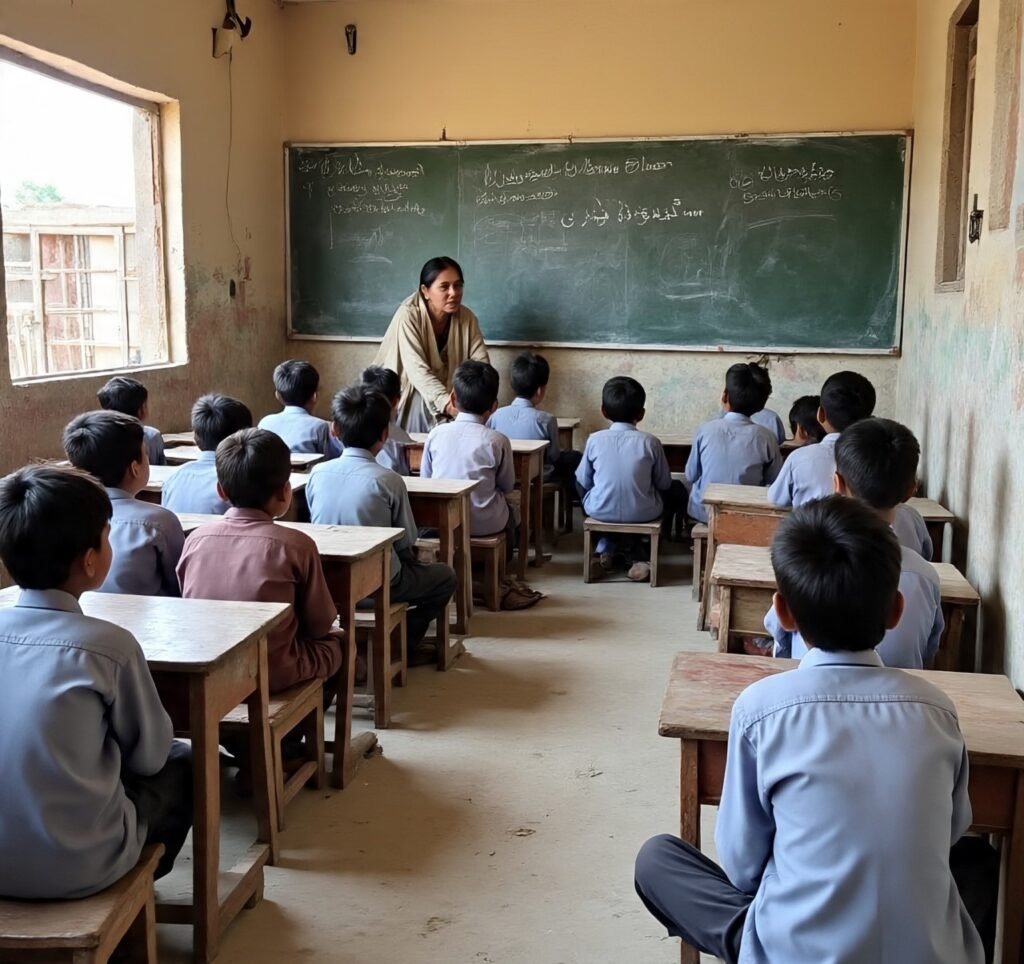July 24, 2025
Implementation of Universal Declaration of Human Rights
By Shazia Tasleem, President of Women’s and Children Rights, IUDHR

Introduction
Children’s Education Crisis in Pakistan: Education is not just a fundamental right—it is the foundation upon which a society rises. Yet in Pakistan, nearly half of our children remain out of school, deprived of the basic tools to shape their futures. As Chairperson of the Women’s Perspective Forum, I present a province-wise, fact-based analysis of the current state of primary and secondary education in Pakistan. This article also sheds light on the neglected issue of madrasas, learning poverty, and systemic inequity.
Pakistan’s Education Landscape: The Grim Reality
Over 25 million children aged 5–16 are out of school. That’s nearly 44% of school-aged children.
The literacy rate stands at 62.8%, but the gender gap is alarming—72% of men are literate compared to only 51% of women.
Public spending on education is just 1.7% of GDP, far below the UNESCO-recommended 4–6%.
“We are not just failing a generation; we are institutionalizing inequality by denying millions of children—especially girls—the right to learn.”
This table highlights the Children’s Education Crisis in Pakistan:
Province-Wise Status of Education
| Province | Literacy Rate | Out-of-School Children | Primary Enrollment (GER) | Secondary Enrollment (NER) |
| Punjab | 66.3% | 27% (9.6 million) | 90% | 16% |
| Sindh | 61.8% | 46% (7.8 million) | 67% | 9% |
| KP | 55.1% | 37% (4.9 million) | 83% | 8% |
| Balochistan | 54.5% | 58% (2.9 million) | 70% | 5% |
| Islamabad | 84–90% | 15% (0.09 million) | 90% | 30% |

Madrasas: The Alternative System
An estimated 2–2.5 million children are enrolled in registered madrasas—some offering basic literacy, others operating without any standardized curriculum or oversight.
While madrasas fill a vacuum in areas where state schools are absent, many:
Do not follow the national curriculum
Lack trained teachers
Are disconnected from modern education and skills
Report abuse and child neglect in extreme cases
“Madrasas should not be scapegoated—but they must be regulated. The solution is not exclusion, but integration into the formal system with proper oversight.”
Major Challenges Across the Country
1. Gender Disparity
2. Inadequate Infrastructure
3. Shortage of Teachers
4. Learning Poverty
5. Low Budget Allocation
What Needs to Change: My Perspective
“Every child who drops out of school is a missed opportunity—for themselves, their families, and their nation. Pakistan must act now with urgency.”
– Increase Education Spending to 4% of GDP
– Launch a National Out-of-School Child Emergency Drive
– Madrasa Reform & Integration
– Gender-Sensitive Policies
– Invest in Early Childhood Education (ECE)
– Digital Literacy & Safe Learning Spaces
Conclusion
Pakistan is standing at an educational crossroads. The children of this country, particularly those in Balochistan, interior Sindh, and tribal KP, cannot wait any longer. We must bridge the gap between promises and action—and do so urgently.
“Education is not a privilege for the few—it is a promise to every child. Let us honor it.”
By: Shazia Tasleem
President of Women’s and Children Rights, Pakistan
Implementation of Universal Declaration of Human Rights (IUDHR)
UN Charter – Pakistan Chapter

Right 👍👍👍